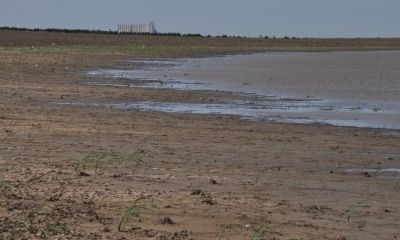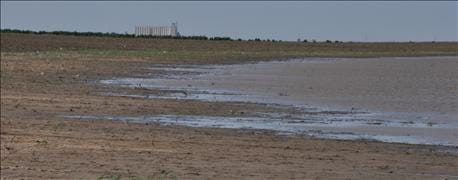
An important deadline is coming up on June 1. By that date, just two weeks away, farmers seeking crop insurance premium subsidies, USDA benefits including loans, disaster assistance or conservation assistance must filing form AD-1026, assuring that their operations are conservation compliant.
Here are five steps to making sure that your farm meets all the requirements for USDA benefits.
Step 1: See if conservation compliance applies to you

SPECIAL REQUIREMENT: Landowners whose properties have special features such as this Playa Lakes wetland, may need help from NRCS to meet conservation compliance requirements for USDA programs.
Conservation compliance applies to any person seeking beneifts from USDA programs including Farm Service Agency loans, disaster assistance, Natural Resources Conservation Service and FSA conservation programs and Risk Management Agency federal crop insurance premium subsidies. Anyone seeing premium subsidies for the 2016 hear, which runs from July 1, 2015 to June 30, 2016, you must be in compliance by June 1.
If you grow commodity crops and you have wetlands of highly erodible land, you may need additional help from FSA and NRCS to meet conservation compliance provisions.
Step 2: Check if you are in compliance
You must file form, AD-1026 to initiate the compliance process. If you are not sure whether or not you have already filed the form, call your local FSa office and see if the form is on file.
Step 3: Complete the form AD-1026
The compliance certificate is used to inform farmers and ranchers of highly erodible land and wetlands requirements, certify compliance with those requirements, identify you and anyone else who needs to complete the form and provide authorization for USDA representatives to service your determination request and check compliance.
Anybody who is seeking a USDA program benefit must complete, sign and file the form AD-1026 with FSA. Additionally, any affiliated person who has a separate far,ming interest must also complete, sign and file the form.
Anyone filing form AD-1026 is certifying they will not plant or produce a commodity on highly erodible land without following an NRCS approved conservation plan; plant or produce an agricultural commodity on a converted wetland or convert a wetland to make the production of an agricultural commodity possible.
Once the form is accurately completed and filed, it remains effective, and a person does not have to refile or update the form again, unless there are changes to the operation or new activities that occur that affect the person’s certification. The form is not specific to a particular crop. It covers all land that a producer farms.
If you have already filed form AD-1026 and are still in compliance, you have already met your filing requirement, and no further action is needed.
Step 4: Get in compliance, if necessary
If your land does need a highly erodible land or wetlands determination, FSA will forward your form AD-1026 to NRCS, the agency responsible for making determinations. Determining whether you have highly erodible land is a simple process based on soil types. Determining whether you have wetlands on your property is a bit more complicated. In many instances, a field visit is needed to look at the soils, plants and hydrology of the site in question.
If needed, NRCS will work with you to develop a conservation plan for protecting highly erodible fields. This plan describes the conservation practices that may be needed to control soil erosion on highly erodible fields.
If you have wetlands on your land, you have a number of options, including leaving the wet areas unaltered, enrolling the land in a voluntary conservation program if eligible, and mitigating for wetland losses.
Step 5: Ensure your farm stays in compliance
You remain in compliance by following the provisions of form AD-1026, any conservation plan you have, and any allowable wetland management options.
For more information, check out USDA’s conservation compliance webpage, nrcs.usda.gov/compliance.
About the Author(s)
You May Also Like






